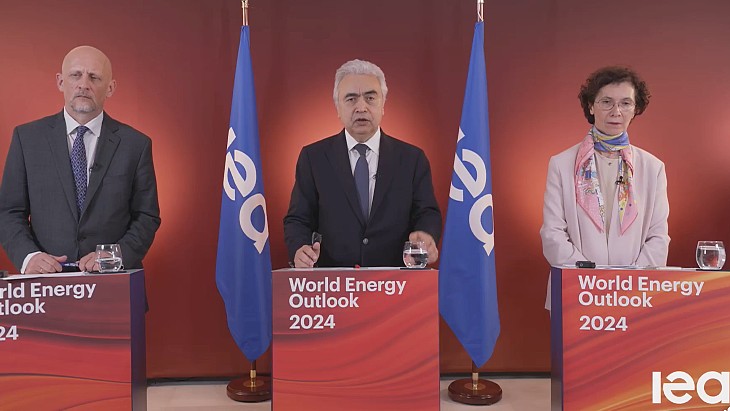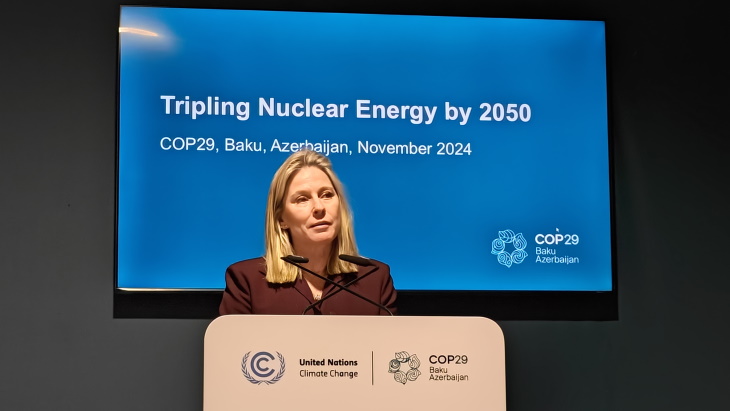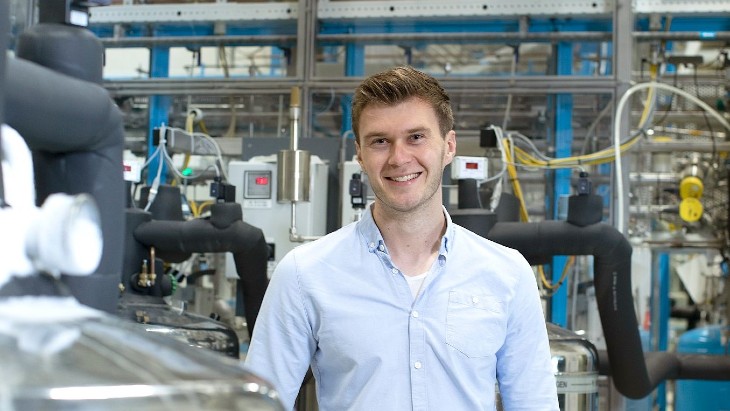US hydrogen initiatives make progress
.jpg)
Westinghouse and Bloom have entered into a Letter of Intent to pursue clean hydrogen production in the commercial nuclear power market and have said they will jointly develop an optimised, large-scale high-temperature integrated electrolysis solution for the nuclear industry. Nuclear plants are well positioned to use electrolyser technology to produce substantial quantities of clean hydrogen with minimal disruption to current, ongoing operations thanks to their ability to operate 24/7 and provide high-quality steam input, the companies said.
"Through this collaboration, we are committed to delivering an economical solution for large-scale hydrogen production in the nuclear industry, which further supports the path to net zero carbon emissions," said Pam Cowan, president of Westinghouse Americas Operating Plant Services.
Solid oxide technology is well suited for nuclear applications, efficiently harnessing steam to further improve the economics of hydrogen production, said Rick Beuttel, Bloom's vice president, hydrogen business. "High temperature electrolysis is already garnering attention and accolades as a cost-effective and viable solution to create low-cost, clean hydrogen, which is critical to meeting aggressive decarbonisation goals," he added.
Global demand for hydrogen and its emerging applications is projected to increase tenfold or more by 2050, the companies noted. The hydrogen produced in nuclear plants can be used to serve many industries such as renewable fuels production, oil and metals refining, ammonia synthesis, mining operations, and transportation. The companies also are well positioned to support the DOE's developing hydrogen hubs, they said.
Hydrogen hubs
The DOE's USD8 billion programme to develop regional clean hydrogen hubs - H2Hubs - is an initiative under the Bipartisan Infrastructure Law. H2Hubs will create networks of hydrogen producers, consumers, and local connective infrastructure to accelerate the use of hydrogen as a clean energy carrier. Over a five-year period from fiscal years 2022 to 2026, the programme aims to support the development of at least four H2Hubs that can be developed into a national clean hydrogen network to facilitate a clean hydrogen economy.
The department has now issued a Notice of Intent ahead of a funding opportunity announcement which it expects to make in September or October this year.
The hydrogen technology investments from the Bipartisan Infrastructure Law are a major component of President Biden's plan to decarbonise the industrial sector, which accounts for a third of domestic carbon emissions, DOE said. DOE's Hydrogen Shot initiative is aiming to cut the cost of clean hydrogen to USD1 per 1 kilogram in one decade.
"Hydrogen energy has the power to slash emissions from multiple carbon-intensive sectors and open a world of economic opportunity to clean energy businesses and workers across the country," said US Secretary of Energy Jennifer M. Granholm. "These hydrogen hubs will make significant progress towards President Biden's vision for a resilient grid that is powered by clean energy and built by American workers."
US annual hydrogen production is currently about 10 million metric tonnes. Most of this is produced from natural gas through steam methane reforming, but electrolysis technology - which uses electricity to produce hydrogen from water - is an "emerging pathway" which could produce hydrogen using clean electricity from renewable energy including solar, wind and from nuclear power, DOE said.
The selection of the regional H2Hubs will use cross-office collaboration and consider factors such as environmental justice, community engagement, consent-based siting, equity, and workforce development.

_99697.jpg)








..._58412.jpg)
